Be the Driver of Change
When organizations have the ability to adapt and drive internal change fast and often, we see an increase in competitive advantages and employees that don’t feel that change is disturbing or disrupting their normal routines.
This Learning Path gives you an understanding of how to start adapting your organization to the future and how to drive change in your organization.
Once you’ve finished the Learning Path, you’ve got:
- An understanding of the relationship between change and mindset.
- Techniques for starting change.
- Concrete tools that can help you drive change.

Part 1: Is your change built-in or bolted-on?
In this podcast episode (in Danish), you will learn the differences between change as natural process and a ”built in” part of the organization, compared to change as a linear process that is ”bolted-on” when needed. You’ll get an understanding of why the first is more likely to succeed than the latter.
[powerpress url =https://media.blubrry.com/fremtidensledelse/content.blubrry.com/fremtidensledelse/FL26_Build_in_eller_Build_on.mp3]
If you want to read more about this topic, we recommend you to dive into this blog post.

Part 2: How to pull change instead of pushing through.
Being able to master change is a prerequisite for staying relevant to both market and employees. In this blog post you’ll learn about the difference between pulling and pushing change, and why pulling often is better than pushing.

Part 3: What comes first? Mindset or Change?
In this podcast episode (in Danish), we discuss how mindset and change goes hand in hand, and why you need to “build the road while you are driving”.
You’ll get some concrete tips on how to start adapting your organization to the future.
[powerpress url =https://media.blubrry.com/fremtidensledelse/content.blubrry.com/fremtidensledelse/FL14-h_nen_eller_gget.mp3]

Part 4: Are you able to drive change?
To be able to get to that point, where change is a part of your organizational core capabilities, you need to understand where you’re today. In this blog post you’ll be introduced to five different change methods. Getting familiar with the five methods will help you reflect upon your status quo and your future change strategy.
If you need more inspiration on how to drive change, try reading Braden Kelly: “Charting Change”

Part 5: Drive change
When adapting your organization to the future, it’s important to understand your key stakeholders and the influencers in the organization. Here you’ll get some concrete tools that will help you map your blast radius as well as the sphere of influence.
You can read more about the tool and get inspired by other tools in this book by Jason Little: “Lean Change Management”

Quiz: Be the Driver of Change
Before you’re finished with this Learning Path, we recommend you take this short quiz. After answering the questions you’ll be able to:
- Work with the relation between change and mindset.
- Identify the most efficient long-term strategy for change.
- Drive change with help of some concrete tools.
Finalize this Learning Path by taking this quiz:
Book recommendations
Congratulation, you’ve finished the Learning Path on how to drive change. If the topic caught your attention, we recommend the following for you to dive deeper in the topic:
Jason Little: “Lean Change Management”
Braden Kelly: “Charting Change”
Jurgen Appelo: “How to Change the World: Change Management 3.0”
Morten Münster: “Jytte fra Marketing er desværre gået for i dag / I’m afraid Debbie from Marketing has left for today”
You can also try another Learning Path to broaden your horizon.
Rating and feedback
